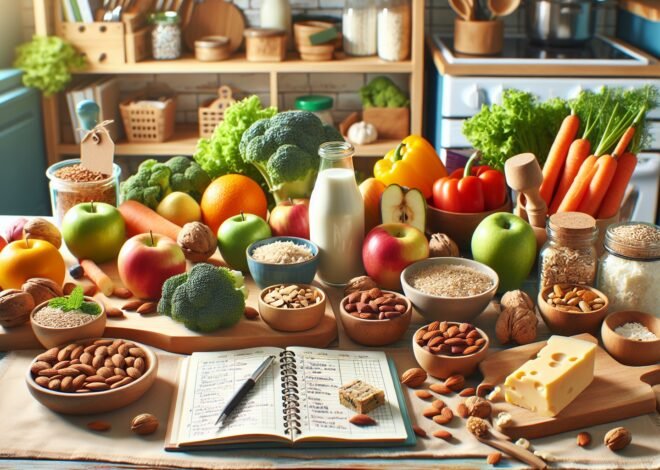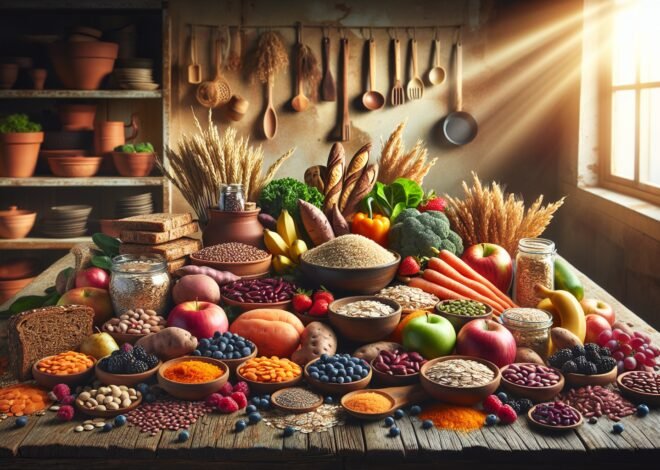
How to Use Cottage Cheese and Ricotta for High-Protein Snacks
Cottage cheese and ricotta are versatile ingredients ideal for crafting high-protein snacks. Packed with protein, they support muscle growth and can aid in weight management. This overview explores easy, creative ways to incorporate these cheeses into your diet for delicious and satisfying snacks. From savory to sweet recipes, discover options that suit different taste preferences and dietary needs. Elevate your snacking routine with simple, healthy ideas that boost energy and promote a balanced diet.
Nutritional Benefits of Cottage Cheese and Ricotta
Both cottage cheese and ricotta are nutritional powerhouses. They are packed with protein, vitamins, and minerals, making them a fantastic choice for anyone looking to improve their diet. These cheeses not only support muscle growth and recovery, but they also contribute to overall health and wellness.
High Protein Content in Cottage Cheese and Ricotta
Cottage cheese and ricotta are excellent sources of protein, crucial for muscle repair and growth. Cottage cheese contains casein protein, which digests slowly, providing a sustained release of amino acids. This makes it an ideal snack for evening consumption, helping to prevent muscle breakdown overnight. Ricotta, on the other hand, is rich in whey protein, which digests more quickly, making it perfect for a post-workout snack to aid in muscle recovery.
Essential Vitamins and Minerals Found in Ricotta and Cottage Cheese
Both cheeses are rich in essential vitamins and minerals. They contain calcium, which is vital for bone health, and vitamin B12, which supports energy production and nerve function. Cottage cheese boasts significant amounts of phosphorus and selenium, both of which play a role in cellular repair and antioxidant defense. Ricotta is a good source of vitamin A, promoting eye health and a strong immune system.
Comparing the Health Benefits of Cottage Cheese vs. Ricotta
Cottage cheese and ricotta each have unique health benefits. Cottage cheese is lower in fat and calories, making it a great choice for those on a weight-loss journey. It’s also higher in protein, which can help with muscle maintenance and satiety. Ricotta is slightly higher in fat, offering a richer texture and flavor, and it’s packed with whey protein for quick muscle recovery. It also provides more potassium, which helps regulate blood pressure and support cardiovascular health.
Creative High-Protein Snack Ideas with Cottage Cheese
Cottage cheese isn’t just for breakfast anymore. It’s a versatile ingredient that can be transformed into creative, high-protein snacks. Whether you’re looking for something savory, sweet, or filling, these cottage cheese ideas have you covered.
Savory Cottage Cheese Dip Recipes for Weight Loss
Savory cottage cheese dips are perfect for those looking to lose weight while still enjoying delicious snacks. They are easy to make and can be paired with a variety of fresh vegetables or whole-grain crackers. Spice things up with a cottage cheese and herb dip, blending cottage cheese with garlic, dill, and chives for a flavorful treat. Try a spicy cottage cheese dip by adding jalapeños, lime juice, and cilantro for a zesty kick.
Cottage Cheese-Based Smoothies for Workout Recovery
Cottage cheese can be a surprising but effective addition to your post-workout smoothie. It adds a creamy texture and boosts the protein content, aiding in muscle recovery. Combine cottage cheese with your favorite fruits like bananas, berries, or mangoes, and a splash of almond milk for a refreshing smoothie. For an extra protein punch, add a scoop of protein powder or a tablespoon of peanut butter.
High-Protein Cottage Cheese Pancakes for Breakfast
Start your day with high-protein cottage cheese pancakes. These pancakes are fluffy, delicious, and packed with protein to keep you energized throughout the morning. Mix cottage cheese with oats, eggs, and a touch of vanilla extract, then cook on a skillet until golden brown. Serve with fresh fruit and a drizzle of honey or maple syrup for a nutritious breakfast that feels like a treat.
Delicious Ricotta Recipes for Protein-Packed Snacks
Ricotta’s creamy texture and mild flavor make it a versatile choice for creating delicious, protein-packed snacks. From sweet to savory, these ricotta recipes are sure to satisfy your cravings.
Sweet Ricotta Toast Variations for a Quick Snack
Ricotta toast is a delightful and quick snack that’s easy to customize. Spread a generous layer of ricotta on whole-grain bread and top with your favorite ingredients. Try ricotta with honey and sliced figs for a sweet, sophisticated treat. For a more indulgent option, add dark chocolate shavings and sliced strawberries. If you prefer a savory twist, top with avocado slices, cherry tomatoes, and a sprinkle of sea salt.
Baking with Ricotta: High-Protein Muffins and Cakes
Incorporating ricotta into your baking can elevate both the flavor and the nutritional value of your treats. Use ricotta in muffin and cake recipes to add moisture and a protein boost. Lemon ricotta muffins are a favorite, combining the zesty brightness of lemon with the creamy texture of ricotta. For a delicious cake, try a ricotta and almond flour cake, perfect for a gluten-free and protein-rich dessert.
Whipped Ricotta Bowls with Fruit and Nut Toppings
Whipped ricotta bowls are a simple yet elegant snack option. Whip ricotta until smooth and creamy, then serve it in bowls with a variety of toppings. Fresh berries, sliced peaches, or pomegranate seeds work wonderfully for a sweet touch. Add a handful of nuts like almonds or walnuts for crunch and extra protein. A drizzle of honey or a sprinkle of cinnamon can enhance the flavors even further.
Conclusion
Cottage cheese and ricotta are versatile ingredients used in various dishes. Cottage cheese is low in fat and high in protein, making it a popular choice for health-conscious meals. Ricotta is creamy and rich, often used in desserts and Italian cuisine. Both cheeses can be incorporated into breakfast, lunch, or dinner recipes. They also pair well with fruits, vegetables, and grains for balanced meals.
FAQ
What are the best recipes using cottage cheese and ricotta together?
Cottage cheese and ricotta pair beautifully in dishes like lasagna, stuffed shells, and cheesecake. Combining them in savory pancakes or adding them to baked ziti can elevate the creaminess and flavor. These cheeses also work well in breakfast casseroles or creamy pasta sauces.
Can you substitute cottage cheese for ricotta in lasagna?
Cottage cheese can replace ricotta in lasagna, offering a similar creamy texture with a slightly different taste. Opt for small curd cottage cheese for a more ricotta-like consistency. Blending the cottage cheese can also smooth out its texture for a better ricotta substitute.
How do cottage cheese and ricotta differ in taste and texture?
Cottage cheese has a mild, slightly tangy flavor with a lumpy texture due to its curds. Ricotta, on the other hand, is smoother and creamier with a slightly sweet and milky taste. These differences make them suitable for varied culinary applications.
Are cottage cheese and ricotta good for a low-carb diet?
Both cottage cheese and ricotta are good choices for a low-carb diet. Cottage cheese typically has fewer carbs and more protein, making it a favorite for those focusing on protein intake. Ricotta, while slightly higher in carbs, still fits well into a low-carb lifestyle when consumed in moderation.
What are the nutritional benefits of cottage cheese vs. ricotta?
Cottage cheese is high in protein and low in carbohydrates, ideal for muscle building and weight management. It also provides calcium and B vitamins. Ricotta offers calcium and vitamin A, with a creamier texture and slightly higher fat content. Both support bone health and provide essential nutrients.
How can I make homemade cottage cheese and ricotta?
Making homemade cottage cheese involves heating milk, adding an acid like vinegar or lemon juice, and allowing curds to form. Drain the curds and rinse for a fresh taste. For ricotta, heat whey or a milk mixture, then strain once curds develop. Both cheeses bring freshness and control over ingredients in your kitchen.











